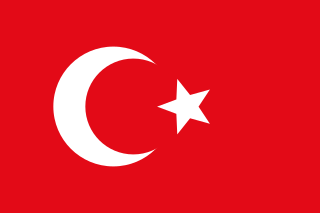 W
WThe Eyalet of Rumeli or Rumelia, also known as the Beylerbeylik of Rumeli, was a first-level province of the Ottoman Empire encompassing most of the Balkans ("Rumelia"). For most of its history it was the largest and most important province of the Empire, containing key cities such as Edirne, Yanina (Ioannina), Sofia, Manastır/Monastir (Bitola), Üsküp (Skopje), and the major seaport of Selanik/Salonica (Thessaloniki).
 W
WThe Vilayet of Adrianople or Vilayet of Edirne was a first-level administrative division (vilayet) of the Ottoman Empire.
 W
WThe Anatolian Bulgarians or Bulgarians of Asia Minor were Eastern Orthodox Bulgarians who settled in Ottoman-ruled northwestern Anatolia, possibly in the 18th century, and remained there until 1914.
 W
WThe Bloody Letter is a letter written by Bulgarian revolutionary Todor Kableshkov which is symbolically accepted to be the start of the anti-Ottoman April Uprising of 1876.
 W
WBudin Eyalet was an administrative territorial entity of the Ottoman Empire in Central Europe and the Balkans. It was formed on the territories that Ottoman Empire conquered from the medieval Kingdom of Hungary and Serbian Despotate. The capital of the Budin Province was Budin.
 W
WBulgarian Millet or Bulgar Millet was an ethno-religious and linguistic community within the Ottoman Empire from the mid-19th to early 20th century. The semi-official term Bulgarian millet, was used by the Sultan for the first time in 1847, and was his tacit consent to a more ethno-linguistic definition of the Bulgarians as a nation. Officially as a separate Millet in 1860 were recognized the Bulgarian Uniates, and then in 1870 the Bulgarian Orthodox Christians. At that time the classical Ottoman Millet-system began to degrade with the continuous identification of the religious creed with ethnic identity and the term millet was used as a synonym of nation. In this way, in the struggle for recognition of a separate Church, the modern Bulgarian nation was created. The establishment of the Bulgarian Exarchate in 1870, meant in practice official recognition of a separate Bulgarian nationality, and in this case the religious affiliation became a consequence of national allegiance. The founding of an independent church, along with the revival of Bulgarian language and education, were the crucial factors that strengthened the national consciousness and revolutionary struggle, that led to the creation of an independent nation-state in 1878.
 W
WThe Bulgarian Revolutionary Central Committee or BRCC was a Bulgarian revolutionary organisation founded in 1869 among the Bulgarian emigrant circles in Romania. The decisive influence for the establishment of the committee was exerted by the Svoboda newspaper which Lyuben Karavelov began to publish in the autumn of 1869. Some of the other revolutionaries who took active part in the formation and work of the BRCK were Panayot Hitov, Vasil Levski and Dimitar Tsenovich.
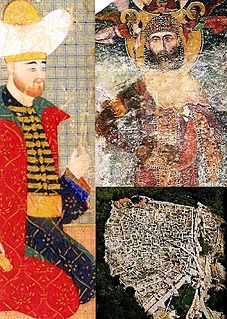 W
WThe Bulgarian–Ottoman wars were fought between the kingdoms remaining from the disintegrating Second Bulgarian Empire, and the Ottoman Empire, in the second half of the 14th century. The wars resulted with the collapse and subordination of the Bulgarian Empire, and effectively came to an end with the Ottoman conquest of Tarnovo in July 1393, although other Bulgarian territories, such as the Tsardom of Vidin, held out slightly longer. As a result of the wars the Ottoman Empire greatly expanded its territory on the Balkan peninsula, stretching from Danube to the Aegean Sea.
 W
WThe Chiprovtsi uprising was an uprising against Ottoman rule organized in northwestern Bulgaria by Roman Catholic Bulgarians, but also involving many Eastern Orthodox Christians. It broke out after the capture of Belgrade by Austria on 6 September 1688 and ended unsuccessfully, with the centre of insurrectionary activity, Chiprovtsi, being completely destroyed by Ottoman forces.
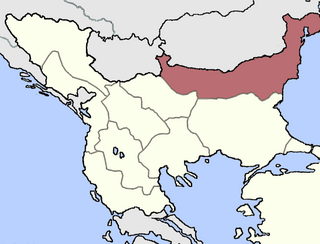 W
WThe Vilayet of the Danube or Danubian Vilayet was a first-level administrative division (vilayet) of the Ottoman Empire from 1864 to 1878. In the late 19th century it reportedly had an area of 34,120 square miles (88,400 km2).
 W
WEastern Rumelia was an autonomous territory in the Ottoman Empire, created in 1878 by the Treaty of Berlin and de facto ended in 1885, when it was united with the Principality of Bulgaria, also under Ottoman suzerainty. It continued to be an Ottoman province de jure until 1908, when Bulgaria declared independence.
 W
WThe First Tarnovo uprising was a Bulgarian uprising against Ottoman rule based in the former Bulgarian capital, Tarnovo, that broke out in 1598 and was severely crushed by the Ottoman authorities.
 W
WThe Sanjak of Gümülcine was a second-level province (sanjak) of the Ottoman Empire in Thrace, forming part of the Adrianople Vilayet. Its capital was Gümülcine, modern Komotini in Greece.
 W
WThe Krastata Kazarma is a former military facility of the Ottoman Empire. The barracks got its name due to its cross-shaped architecture. It is one of the cultural memorials of the region of Vidin, Bulgaria, today.
 W
WAlbert Long was an American Methodist pastor who devoted much of his life preaching in the Balkans. During his missionary activities in the Ottoman Empire he contributed to the Bulgarian National Revival. Long's contributed significantly to the translation of the Bible in modern Bulgarian. This translation established the literary norms of the contemporary Bulgarian language.
 W
WNiš Eyalet was an administrative territorial entity of the Ottoman Empire located in the territory of present-day southern Serbia and western Bulgaria. It was formed in 1846 and its administrative centre was Niš. Pashaluk of Niš was incorporated into Danube Vilayet in 1864.
 W
WOsman Pazvantoğlu was an Ottoman soldier, a governor of the Vidin district after 1794, and a rebel against Ottoman rule.
 W
WThe Razlovtsi insurrection was a rebellion in the areas of Maleshevo and Piyanets in Ottoman Macedonia during 1876.
 W
WElias Riggs was an American Presbyterian missionary and linguist born in New Providence, New Jersey. During his missionary activities in the Ottoman Empire he contributed greatly to the Bulgarian National Revival. He organized with Albert Long the first translation, and worked on editing, printing and dissemination of a translation of the Bible into modern Bulgarian. In 1844 he published the first Grammar of the modern Bulgarian language. Riggs did research on Chaldee Language, and also guided the translation of the Bible into modern Armenian language.
 W
WRostislav Stratimirovic was a Bulgarian rebel leader who led the Second Tarnovo Uprising against the Ottoman Empire in 1686. He claimed the title Prince of Tarnovo, as a claimed descendant of the medieval Bulgarian ruler Ivan Stratsimir.
 W
WRûm, also transliterated as Roum, is a derivative of the term Ῥωμαῖοι (Rhomaioi). The latter was an endonym of the (pre-Islamic) inhabitants of Turkey, the Middle East, and the Balkans, dating to when those regions were parts of the Byzantine Empire.
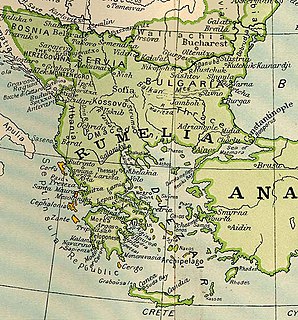 W
WRumelia, etymologically "Land of the Romans", was the name of a historical region in Southeastern Europe that was administered by the Ottoman Empire, corresponding to the Balkans. In its wider sense, it was used to refer to all Ottoman possessions and vassals that would later be geopolitically classified as "the Balkans".
 W
WThe Sanjak of Kyustendil was an Ottoman administrative-territorial unit that existed from 1395 to 1878. It included the former lands of Konstantin Dragash - Province of the Dejanović family.
 W
WThe Second Tarnovo uprising, according to a unique Russian source published in 1847, is thought to be a Bulgarian uprising against Ottoman rule based in the former Bulgarian capital, Tarnovo, that broke out in 1686 and was severely crushed by the Ottoman authorities.
 W
WThe Eyalet of Silistra or Silistria, later known as Özü Eyalet meaning Province of Ochakiv was an eyalet of the Ottoman Empire along the Black Sea littoral and south bank of the Danube River in southeastern Europe. The fortress of Akkerman was under the eyalet's jurisdiction. Its reported area in the 19th century was 71,140 square kilometres (27,469 sq mi).
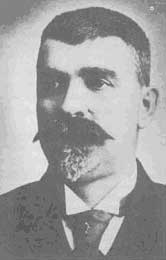 W
WUnder the Yoke, with subtitle A Romance of Bulgarian Liberty is a historical novel by Bulgarian author Ivan Vazov written in 1887-1888 and published in parts 1889-1890 in a magazine The Collection of Folk Tales and in a single book 1894. It is set in a small town in Central Bulgaria during the months leading up to the April Uprising in 1876 and is the most famous piece of classic Bulgarian literature. Under the Yoke has been translated into more than 30 languages. The English translation was made in 1894 by William Morfill and published by the London publishing house William Heinemann.
 W
WThe Eyalet of Vidin was an administrative territorial entity of the Ottoman Empire located in the territory of present-day north-western Bulgaria. It was formed in 1846 and its administrative centre was Vidin. It was incorporated into Danube Province in 1864 and its sanjaks were reduced to townships except Vidin.
 W
WThe Sanjak of Vidin or the Vidin Sanjak was a sanjak in the Ottoman Empire, with Vidin as its administrative centre. It was established after the Battle of Nicopolis in 1396 out of the territories of the Tsardom of Vidin and in mid 15th century annexed some territories that belonged to the Serbian Despotate before Ottomans captured it.